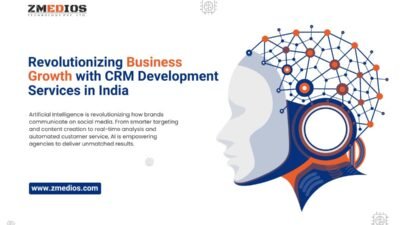India has become a global hub for mobile app development, offering not only competitive pricing but also cutting-edge technology and skilled talent. Whether you’re a startup or an established enterprise, understanding the cost of mobile app development in India is crucial to making informed decisions and maximizing your ROI. In this article, we break down the cost structure, influencing factors, and why hiring a Mobile App Development Company in India is one of the smartest business moves today.
Why India is the Global Leader in Mobile App Development
India boasts one of the largest pools of IT professionals, offering high-quality development services at a fraction of the cost in Western countries. A typical mobile app that might cost $100,000 in the U.S. could be developed for $10,000 to $40,000 in India, without compromising on quality.
Key advantages of choosing India:
- Skilled Developers with expertise in iOS, Android, Flutter, React Native, etc.
- Cost-effective development due to lower operational and labor costs.
- Time-zone flexibility for global clients.
- Agile methodology and fast turnaround time.
- Supportive government policies for the IT sector.

Breakdown of Mobile App Development Cost in India
1. Type of App
The type of app significantly impacts the cost:
- Basic App (Informational): $5,000 – $10,000
- Data-driven App: $10,000 – $25,000
- Social Media App: $20,000 – $50,000
- E-commerce App: $15,000 – $60,000
- Ride Sharing App: $30,000 – $100,000+
- Enterprise Solutions: $40,000 – $200,000
If you’re looking for a ride sharing app development company in India, expect to pay more due to the complexity involved — GPS integration, real-time tracking, payment gateways, user roles, and scalability features.
2. Platform (iOS, Android, or Both)
- Android App Only: +10% cost compared to iOS due to device fragmentation.
- iOS App Only: Slightly cheaper, but limits user base.
- Cross-platform (Flutter, React Native): Saves up to 30–40% compared to native development for both platforms.
3. Features and Functionality
Each additional feature adds to the cost. Here’s a list of features with estimated costs:
| Feature | Estimated Cost Range |
|---|---|
| User Login/Signup | $500 – $1,000 |
| GPS Tracking | $1,000 – $3,000 |
| Push Notifications | $500 – $1,500 |
| In-app Payments | $1,500 – $4,000 |
| Chat/Messaging | $2,000 – $5,000 |
| Admin Panel | $3,000 – $7,000 |
| Rating & Reviews | $800 – $2,000 |
4. UI/UX Design
Good design isn’t just aesthetic; it impacts user retention.
- Basic Design: $1,000 – $3,000
- Custom/High-end UI: $3,000 – $10,000
- Prototyping & User Testing: Adds another $1,000 – $5,000
5. Backend Infrastructure and APIs
Backend is the engine behind the app. Costs depend on scalability and security requirements.
- Basic Backend (Firebase, AWS): $2,000 – $6,000
- Custom APIs & Admin Dashboards: $5,000 – $20,000
- Advanced Infrastructure (Load Balancing, CDNs): $10,000+
6. Testing and Quality Assurance
India-based firms ensure multiple layers of QA before delivery.
- Manual Testing: $1,000 – $3,000
- Automated Testing: $2,000 – $5,000
- Performance & Load Testing: $2,000 – $7,000
7. Post-Launch Support and Maintenance
Don’t overlook ongoing costs:
- Bug Fixes & Updates: Typically 15–20% of total development cost annually
- Feature Enhancements: Billed hourly or as a retainer
- App Store Optimization (ASO): $500 – $2,000/month
Hidden Costs You Should Be Aware Of
While pricing in India is transparent, some elements might add to your overall budget:
- Third-party API integrations (e.g., payment gateways, maps)
- Cloud hosting and storage (AWS, Google Cloud)
- Licensing or compliance-related charges
- Marketing and promotion post-launch
Choosing the right Mobile App Development Company in India ensures these are all scoped clearly in the contract.
How to Choose the Right Mobile App Development Company in India
Finding the right partner can make or break your app project. Here’s what to look for:
- Portfolio and Case Studies
Look for companies that have built apps in your industry, especially if you’re looking for a ride sharing app development company in India. - Client Testimonials & Reviews
Platforms like Clutch, GoodFirms, and Google reviews offer transparency. - Communication & Project Management Tools
Ensure they use tools like Jira, Trello, or Slack. - Tech Stack Expertise
Ensure they specialize in the technologies you need — whether it’s native, cross-platform, or PWA. - Post-launch Support
Top companies offer long-term partnerships, not just development.
Why Indian Companies Excel in Ride Sharing App Development
Ride-sharing apps are among the most complex mobile apps due to their real-time nature. A competent ride sharing app development company in India will offer:
- End-to-End Customization
- Robust GPS and Map Integration
- Scalable Backend for Peak Traffic
- In-app Wallet and Payment Gateway Integration
- Rider and Driver Panels with Role-Based Access
- Admin Dashboard for Real-Time Analytics
India’s expertise in real-time architecture (e.g., Node.js, Kafka) gives them a competitive edge in this domain.
How Long Does It Take to Develop a Mobile App in India?
Timelines depend on app complexity:
- Simple App: 2 – 3 months
- Moderate App: 3 – 6 months
- Complex Apps (e.g., ride sharing, marketplaces): 6 – 12 months+
Agile development methodologies and time-zone overlap with the West make collaboration seamless and efficient.
Conclusion: India Delivers High ROI for App Development
Working with a Mobile App Development Company in India gives you access to top-notch development, scalable solutions, and unbeatable cost advantages. Whether you’re building a utility app or hiring a ride sharing app development company in India, the value you get is unmatched.
Focus on choosing the right development partner, defining your scope clearly, and investing in design and testing to ensure your app is not just functional, but market-ready and user-loved.




